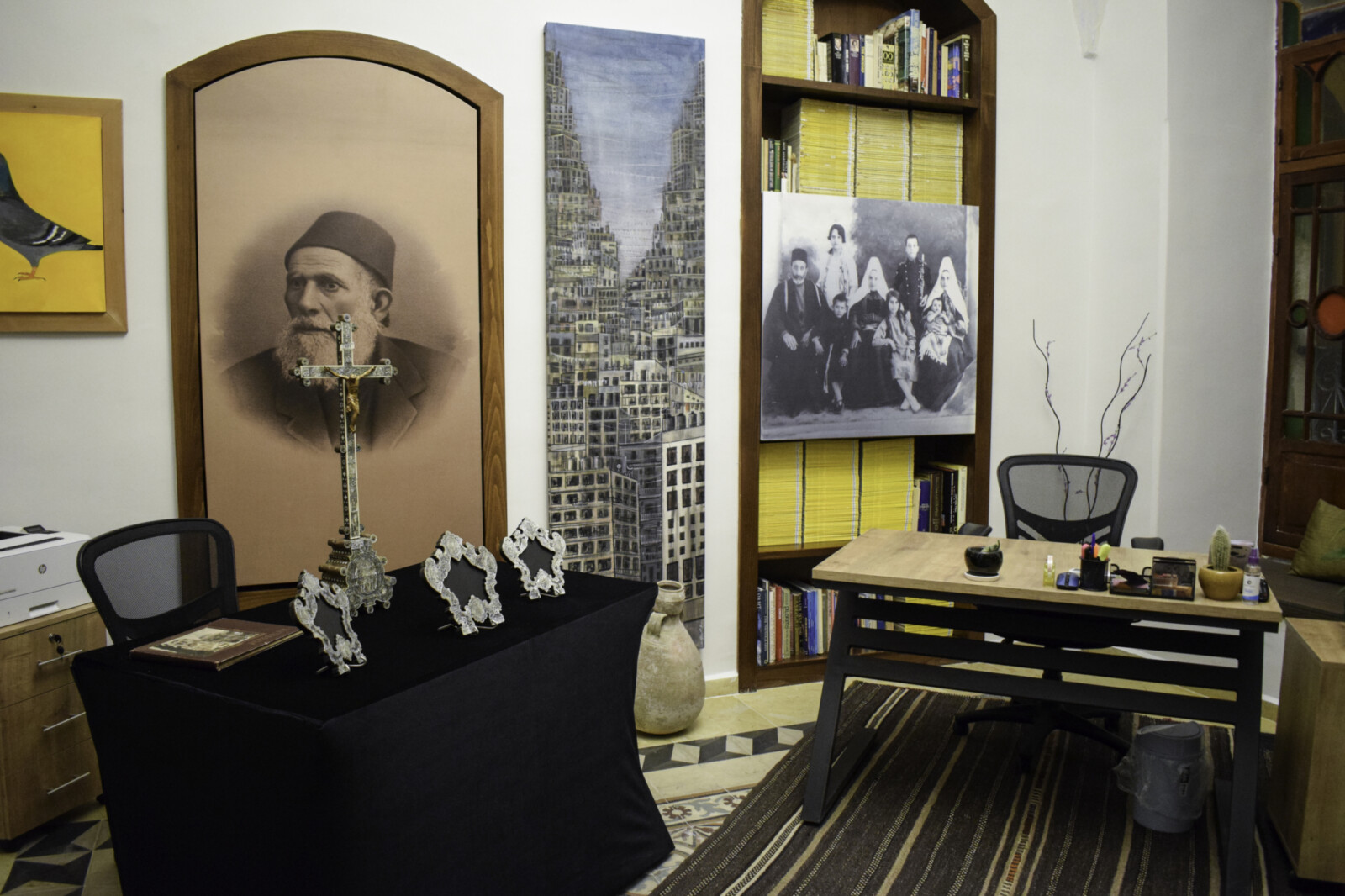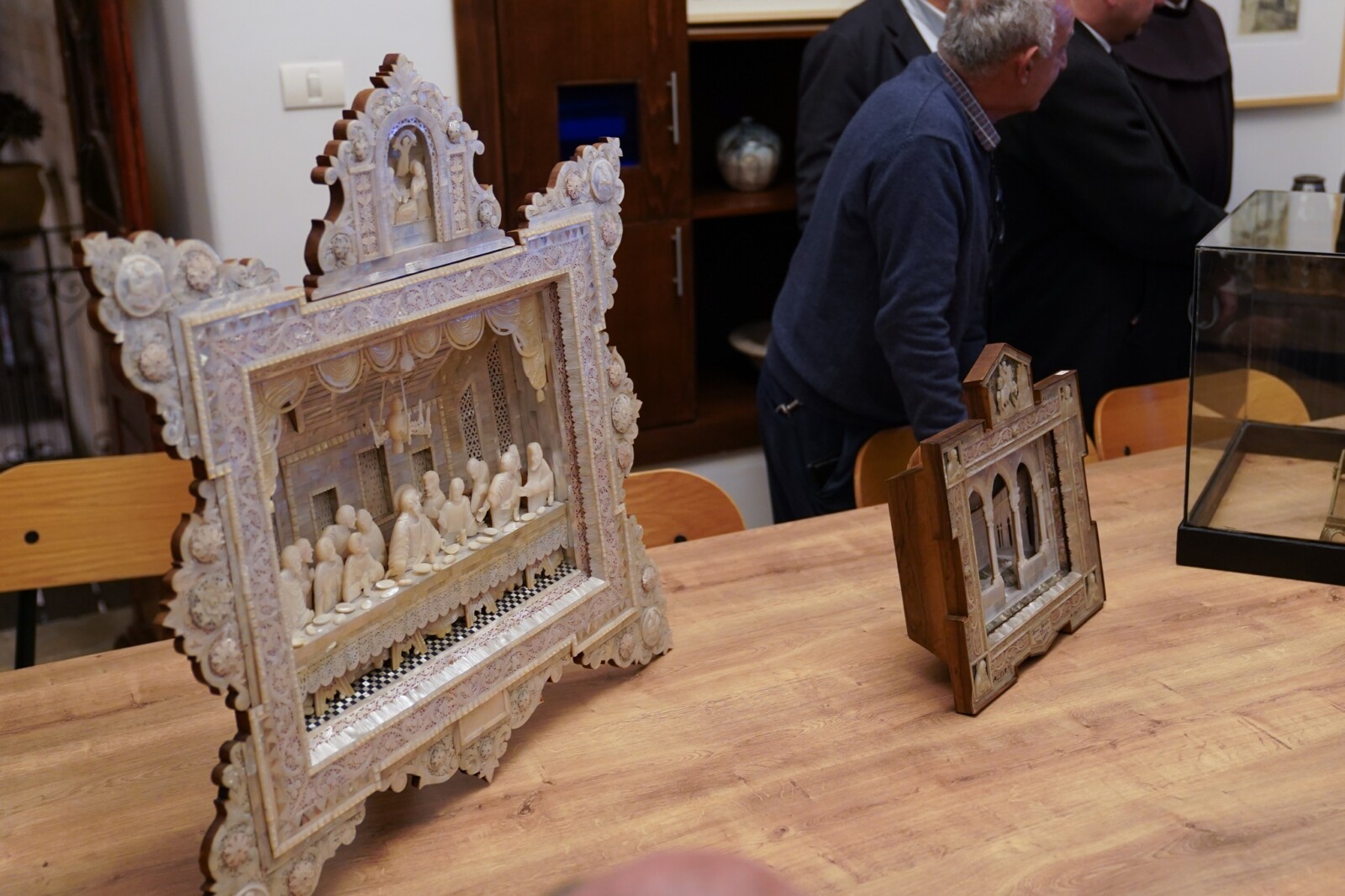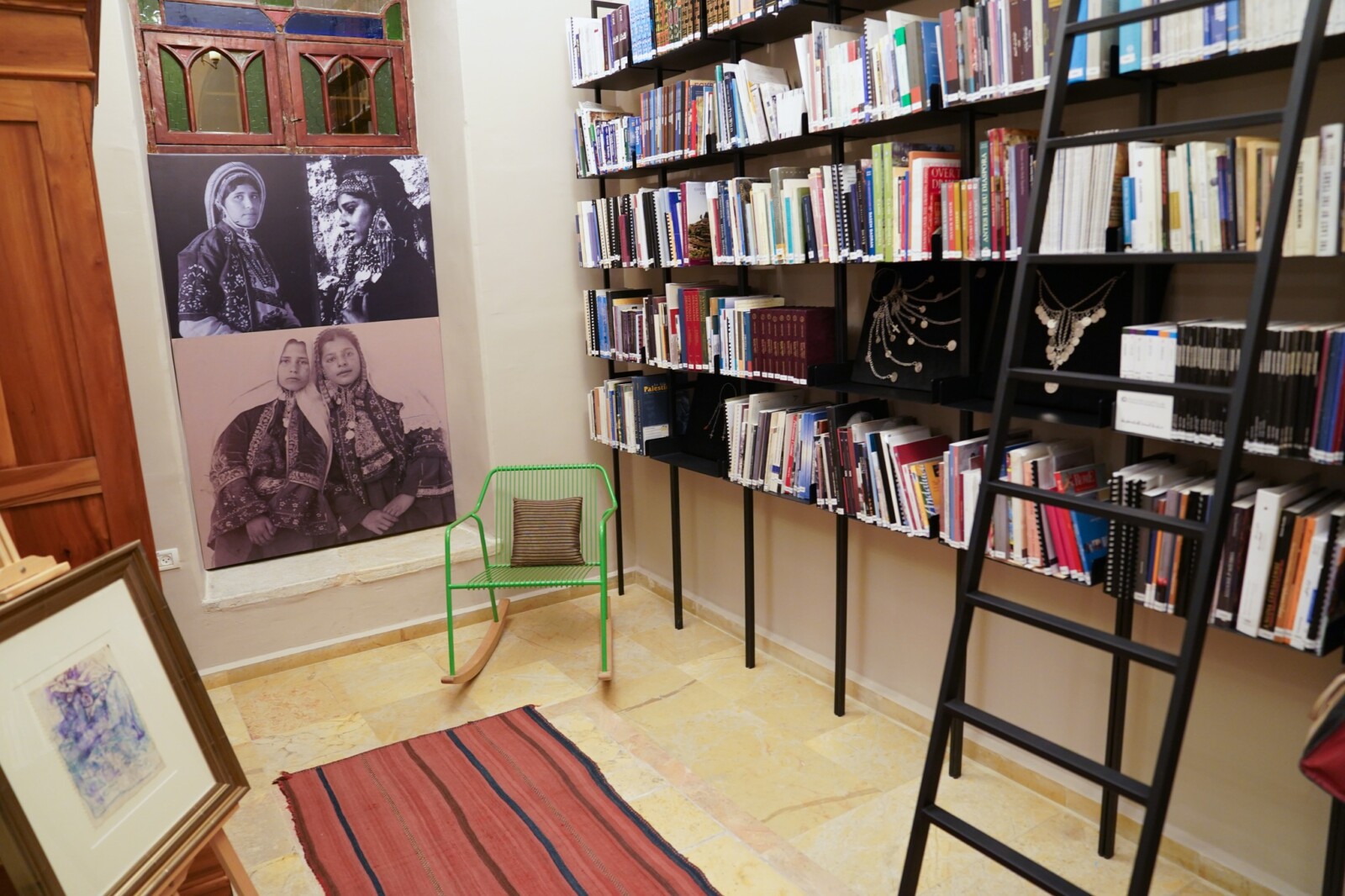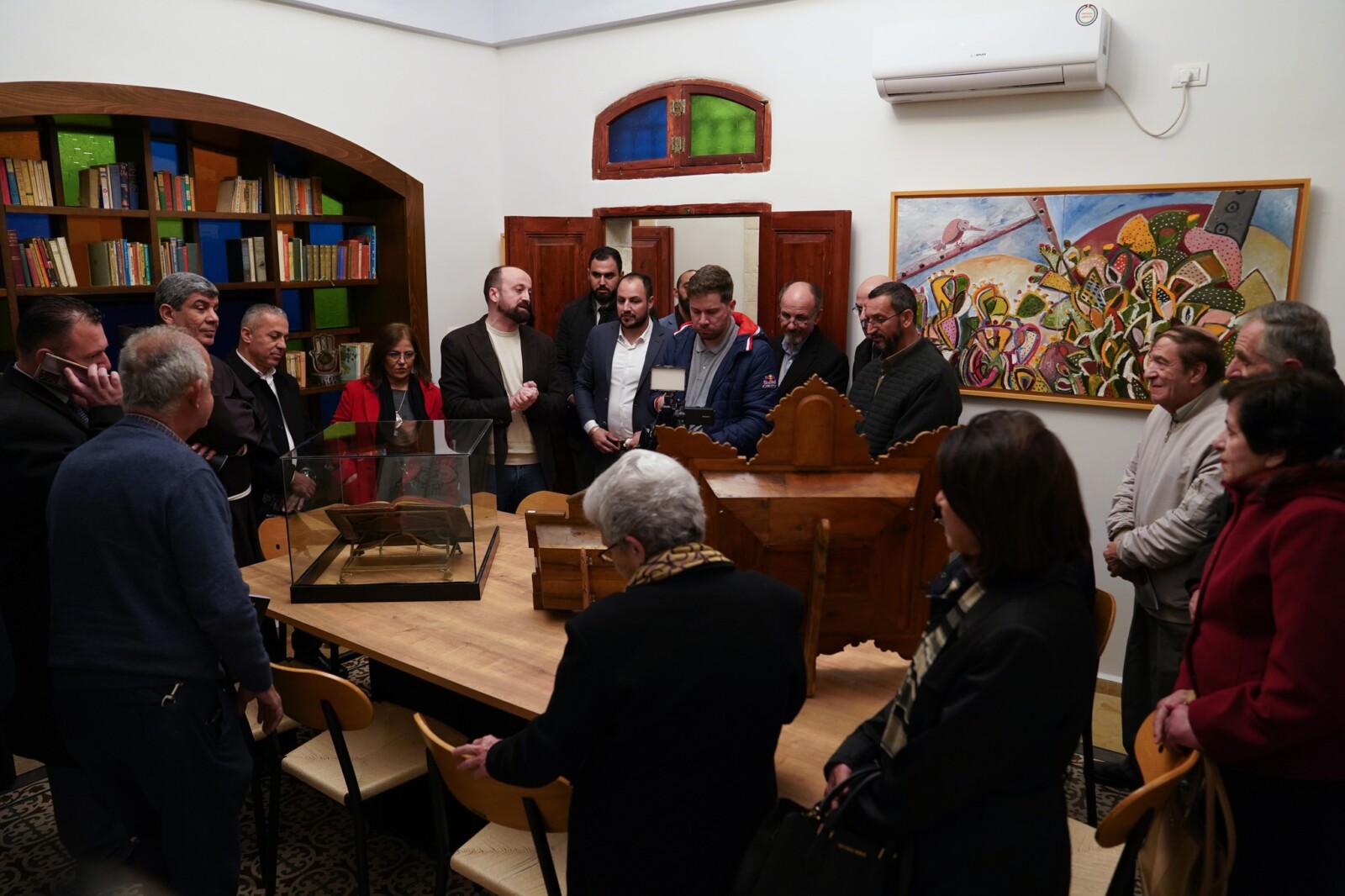Palestinian Craftsmanship on Display in Bethlehem
From December 19, 2022 to January 4th, 2023 an exhibit was shown in Bethlehem called “Minkom wa elaykom”, which is the result of a collaboration between the Terra Sancta Museum (TSM) and the Dar Al-Sabagh Center, which is also the site of the exhibit. Curated by George Al’Ama, member of the scientific committee at TSM, this is the museum’s very first exhibit so directly related to the Palestinian world.

You have to climb a few steps, in the middle of Star Street, to discover Dar Al-Sabagh, a Palestinian house from the early twentieth century. Specializing in genealogical research about Bethlehem families, Dar Al-Sabagh is a two-story building of light stones, newly restored and decorated with works from contemporary Palestinian artists. For fifteen days, for the first time in Bethlehem, works from the collections of the Custody of the Holy Land were exhibited, some of which will be part of the future Terra Sancta Museum. Free of admission, the exhibition displayed these works of Palestinian craftsmanship in the offices, meeting room, salon and library.

An Intimate Minimalist Setting
George Al’Ama, curator of the exhibition and specialist in Palestinian arts and crafts, has selected these masterpieces, kept by the Franciscans in the rooms of the convent of Saint Saviour. In close collaboration with the Department of Cultural Heritage of the Custody, he has accurately documented this heritage and had it restored by local artisans.
The set-up is “very simple, because it’s full of intensity”, George explains. Consisting of black backgrounds, somber store windows, and large photos of shops in Bethlehem, it was arranged with the aim of “giving a face to the works” through images depicting artisans and their families.

Bethlehem Artisanal Craft Exhibition
The 18 pieces chosen for the exhibit allow you to get closer to this local craftsmanship, the craftsmanship of the same workshops that were once located a few meters from the exhibition venue: on Star Street, in Bethlehem. Some of these works were made right here, commissioned by the Franciscans, such as this extraordinary model of the Holy Sepulchre of the seventeenth century. Others have a much more avant-garde style, such as the San Giorgio di abalone (a shell known for its quality and its color of gray and green reflections).
In another room, two traditional headdresses, one from Ramallah and the other from Hebron, made by the women of Bethlehem, were displayed. The headdress belonged to the entire village and was lent to the future bride at the time of engagement. Fittingly, a traditional song for a bride preparing for her wedding sounded through the room.
Eyad Handal, assistant curator of the exhibition, recorded the song for the occasion with Ishak Al Hroub, author of a book on traditional Palestinian costumes. This collaboration was an initiative of great anthropological value that allows the Dar Al-Sabagh center to connect the Palestinian diaspora with its roots.


A Living Family Heritage
The family handicrafts chosen also included some Arabic jewelry decorated with local and European coins, whose Christian crosses give them an exceptional rarity. These iznaqs, traditional necklaces, were offered by parishioners to the friars for their intentions or as a sign of thanksgiving. The most touching object was undoubtedly the wicker basket where all these jewels were once stored. When George Al’Ama discovered this treasure, he was immediately able to identify with certainty a necklace given to the Franciscans by his grandmother.
This link with the ancestors is also found in the kawas costume, the same that the guards, established by the Ottomans, still wear today to protect the various churches in the Holy Land. Today the kawas accompany the solemn entrances of the patriarchs and ensure order and security during the various Christian liturgies.
Pearls, headdresses, jewelry… all these works are directly connected to the history of the Christian families of Bethlehem. Altar canons from the Rock family, a cross of the Michel family, mother-of-pearl dioramas of the Zoughbi or Jamil Mussalam families: all these works could be enjoyed for a few days by the descendants of the artisans who had created them. The presence of some of these families at the inauguration gave unprecedented humanity to the collections of the Custody, which are intimately linked to the Palestinian world. The choice of the title of the exhibit, taken from an Arabic proverb, shows, in this spirit, the importance of the intergenerational bond: Minkom wa elaykom, literally “from you to you”.

To find out more:
Translated from French by Lois Owen.



